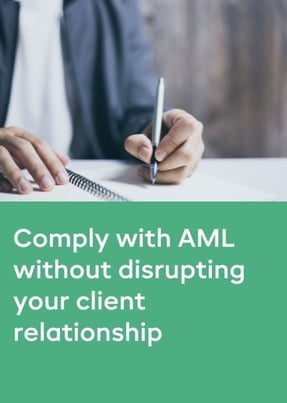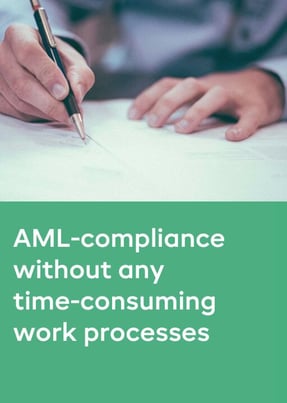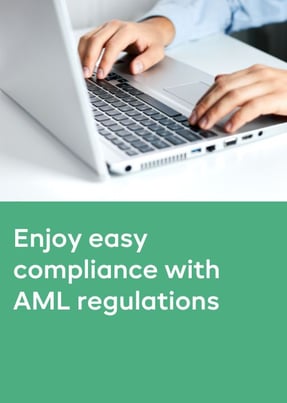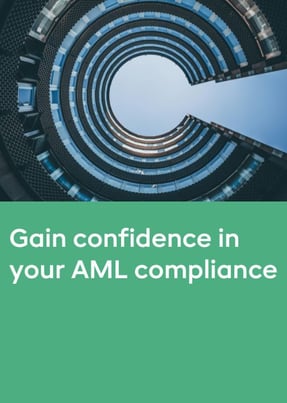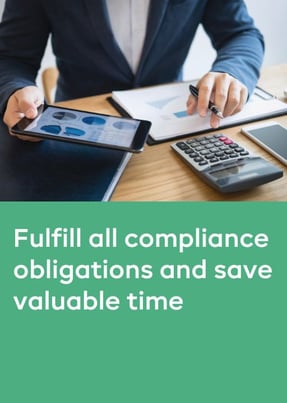- Products
- RegLab for ...
- Knowledge centre
Download the AML glossary >
 Discover the essential AML compliance terminology and gain instant access to a comprehensive guide
Discover the essential AML compliance terminology and gain instant access to a comprehensive guide - The company
Working at RegLab >
There may not be any vacancies that perfectly match your profile, but that does not mean there is no room for someone who can improve RegLab.
- Book a demo
AML screening: which risk lists shouldn't you forget?
'What exactly do you screen clients for?' You screen clients not only to see whether they appear on a sanctions list. You also check the lists of high-risk countries for each person involved in the matter. What to screen and what you do if a client is on a list is explained in this article.
Number of the ID
To identify natural persons and legal entities, you request several documents. Which ones they are, you can read in the article: What documents do I request during an AML screening? Every screening starts with a name, country of residence or establishment and/or ID identification and verification. You ask for the number of the ID (you may only store a copy of ID if it is an AML file) and check whether the person on the ID matches your client. The (national) ID number is crucial in the further screening process. This is a unique number on which you can better search the risk lists. If you search only by first and last name, you might come across 10 other people. This slows down and complicates the process and, as a busy professional, you have a lot more other work to do.
Risk lists
If a country, company or person is imposed a sanction, it will appear on a sanctions list. There are various sanctions lists, such as the 'EU sanctions list'. These sanction lists are constantly evolving. This is because sanctions are constantly being imposed, to which the lists are then adapted. Below is an overview of the lists you should not forget during any AML screening:
- EU sanctions list;
- UN sanctions (persons);
- EC list countries with AML/CFT strategic deficiencies;
- FATF list ‘high risk and non-cooperative jurisdictions’;
- EU list ‘non cooperative tax jurisdictions’;
- OFAC list.
High-risk countries
If your client appears on the list of high-risk countries, you don't have to go into panic mode right away. You may work for a client based in a high-risk country, as long as it falls within your risk appetite. To do this, first investigate some standard matters such as: the origin of the UBOs' assets and the source of funds brought in for the transaction. After this, assess whether it is logical for your client, or a representative or UBO, to live in a high-risk country. If it is logical and you can explain this, then you may work for this client. However, it is important to substantiate this well. Therefore, do not forget to record the investigation and your assessment.
A person is sanctioned, now what?
Suppose you deal a lot with Russian clients and one of their UBOs is on a sanctions list. Now it is crucial to scrutinise what services you will perform for the client. If you are going to work directly for this UBO, there is a very high chance that this is not permitted. Before jumping to conclusions, it is wise to study the regulation under which the person has been sanctioned. It is your own responsibility to do this research. Sometimes there is a grey area, or a doubt. Note; ultimately, you are the one who has to make the assessment and record it. You can only do this on the basis of thorough research and common sense (and a little gut feeling).
A software offers solutions
Going through the risk lists manually is a hopeless task. The Dutch sanctions list is manageable, but the European and other international lists are much more extensive and constantly changing. In addition, you are obliged to continuously monitor your clients. For this reason, it is highly recommended to use an AML tool such as RegLab. The big plus is that your clients are automatically screened against these lists. RegLab also offers the possibility to create a report and check your entire portfolio at any time. Client sanction monitoring takes place in the background. If a client appears on a risk list, you see this immediately and can start a follow-up investigation. It also works the other way round. Should a client be taken off the sanction or risk list, you can scale the risk profile back from high to medium risk, for instance. In short, good AML software can help you further in this respect.
Themed file: fully prepared for the supervisor’s audit
This article is part of a number of articles and downloads that will help you prepare yourself for the supervisor’s visit. Do you want to be 100% AML-proof and ready for the supervisor’s visit? Find all FAQs in our Knowledge Centre.
